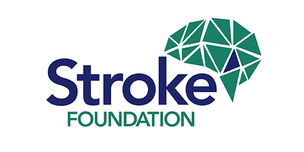|
What are deep breathing exercises? Deep breathing, also known as belly breathing, diaphragmatic breathing, or abdominal breathing, is a simple way to clear your mind and ease stress. Drawing in extra oxygen does wonders for the mind and body. It cleanses, opens, and soothes different parts of our being. We all breathe in and out every day, but when was the last time you took a deep breath? Most people don't do it as often as they think, but deep breathing is a convenient tool to help you combat stress, anxiety, reduce pain, and even lower your blood pressure. Top 8 Benefits of Deep Breathing Exercises Check out these top benefits of deep breathing from therapist Andrea Watkins at Urban Balance. 1. Decreases stress, increases calm. By taking deep breaths, your heart rate slows, more oxygen enters our blood stream and ultimately communicates with the brain to relax. Deep breathing also ups your endorphins, the “feel good” chemical. 2. Relieves pain. When the body releases endorphins, not only they help you feel good, but they combat pain too. 3. Stimulates the lymphatic system (detoxifies the body). Breathing is in charge of 70% of cleansing the body of toxins (the other 30% is through bladder and bowels). If you do not breathe fully, your body must work overtime to release these toxins. 4. Improves immunity. When your blood is fully oxygenated, it carries and absorbs nutrients and vitamins more efficiently. Essentially, the cleaner the blood, the harder it is for illnesses to stay in your system. 5. Increases energy. The more oxygen that is in the blood, the better your body functions. It also improves stamina. 6. Lowers blood pressure. As your muscles relax, your blood vessels dilate, which improves circulation and lowers blood pressure. Deep breathing also slows and regulates the heart rate, which also helps lower your blood pressure. 7. Improves digestion. The more you breathe deep, the healthier blood flow you will produce, which promotes your organs to function more effectively, including your intestines. 8. Helps correct body posture. Next time you breathe in, notice that you simultaneously lengthen and straighten your spine. In order to take a deep breath in, your lungs take up maximum space, your diaphragm pulls down, so in turn your torso straightens in order for this to be possible. Click the button below to read the complete article: Click "Read More" for some methods of deep breathing you can try right now.
0 Comments
As we age, the probability that we will suffer a stroke increases, but did you know that more than 80% of strokes can be prevented through good diet and exercise? So, what exactly is a stroke? According to Australia's Stroke Foundation, a stroke happens when the blood supply to the brain is interrupted. Blood is carried to the brain by blood vessels called arteries. Blood contains oxygen and important nutrients for your brain cells. Blood may be interrupted or stop moving through an artery either because the artery is blocked (ischaemic stroke) or because it bursts (haemorrhagic stroke). When brain cells do not get enough oxygen or nutrients, they die. What increases your risk of a stroke? Age is only one of many stroke risk factors. Some factors depend on your lifestyle choices, others on your medical history, and then there are risk factors that you cannot control. The most common lifestyle factors to increase your likelihood of a stroke are:
How do you know if you're having a stroke? The most common symptoms of a stroke can be recognised if you think F.A.S.T.
What does life look like after a stroke?
Getting back to life after a stroke is helped through specialised rehabilitation. Everyone’s stroke is different, so it’s hard to predict how much each individual will recover. Some people return to 100 per cent or very close, while others may continue to have impairments. Improvement can continue for years after a stroke, but for many people it's the quickest in the first six months. This is why it’s important for health professionals like physiotherapists and speech pathologists to start working with you as soon as possible after a stroke. The Stroke Foundation also offers a service called EnableMe, which is a website that can help with stroke recovery and with managing life after stroke. |








 RSS Feed
RSS Feed
